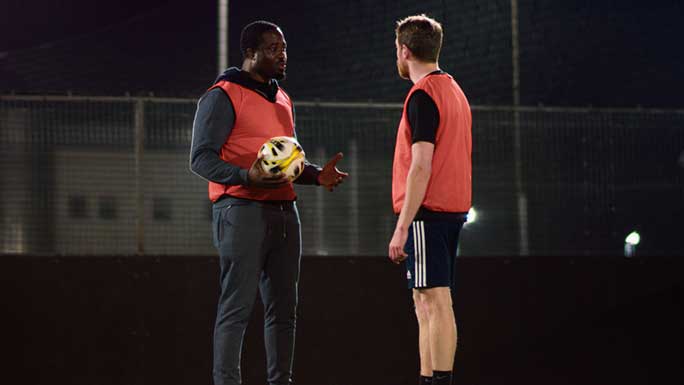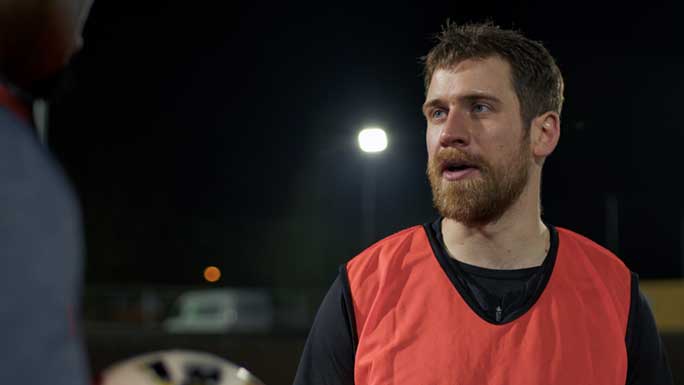‘Inside out’ and its message about child mental health
‘Inside Out’ is a fun family film, but it’s also an important allegory of mental health problems in young people. The film follows and 11 year old girl called Riley, and her emotions that rule her conscience.
Joy, Fear, Anger, Disgust and Sadness all live inside Riley’s ‘Headquarters’ and take turns to control her emotions and reactions to the world around her. Generally they make sure that Riley is happy and that her positive memories outweigh the negative memories; that is until Riley’s parents say she has to move to San Francisco and there are a load of new and confusing situations that she has to react to.
Around the age of 11 there are a lot of changes happening for children, for example they are starting secondary school and going from being the biggest in the school to the smallest can be a daunting experience. Then cycle in the hormonal changes happening and you have yourself a pretty difficult time. Emotions are up and down, so it makes it and to distinguish between mentally health children and those whose mental health may be another problem.
When I was Riley’s age, and just starting secondary school life did seem difficult and hard. I had gone into secondary school and into a class where I didn’t know anyone, which made me feel lonely, and then adding in the pressure to do well in class, at times it felt like too much to take on.
The film ‘Inside Out’ explains these problems in a visual way. There is a part when Joy and Sadness get lost in Riley’s long-term memory storage, a literal labyrinth of stored old memories, so her headquarters is left in the control of Fear, Anger and Disgust. Without Joy and Sadness Riley’s emotions become narrowed and bitter and she falls out with old friends, forgets about making new ones and fights with her family.
This film is a great way to show children about emotions in a visual way, it is also extremely relatable. It shows that Sadness, although always sad, hardly causes effect in Riley’s life at all, until she herself gets sadder and gets lost with joy which then shows depression.
There is a part when Riley’s dad leaves in the middle of the family’s moving house chaos and Sadness says ‘I should drive, right?’ Recognising the sad event sadness would have been the correct response to it, but Happiness is determined she wants Riley to be happy, and keeps control, meaning Riley’s parents think she is happy, when really she is anything but.
This film is just great for children to help work out their emotions, but also for adults to get an insight into how their children may be feeling and the battles they are going thorough in their ‘headquarters. It has put a subject that can carry a lot of stigma and made it mainstream, and this is an extremely positive message and thing to have out there.
In the end Riley’s true feeling are listened to and her headquarters get upgraded to Joy and the rest of the emotions don’t have to take turns in controlling her, and although it’s not a happily ever after, it is an ‘emotionally balanced’ ever after, which for people struggling with mental health issues, is as good as a happily ever after.
‘Inside Out’ is a fun family film, but it’s also an important allegory of mental health problems in young people. The film follows and 11 year old girl called Riley, and her emotions that rule her conscience.
Joy, Fear, Anger, Disgust and Sadness all live inside Riley’s ‘Headquarters’ and take turns to control her emotions and reactions to the world around her. Generally they make sure that Riley is happy and that her positive memories outweigh the negative memories; that is until Riley’s parents say she has to move to San Francisco and there are a load of new and confusing situations that she has to react to.
Around the age of 11 there are a lot of changes happening for children, for example they are starting secondary school and going from being the biggest in the school to the smallest can be a daunting experience. Then cycle in the hormonal changes happening and you have yourself a pretty difficult time. Emotions are up and down, so it makes it and to distinguish between mentally health children and those whose mental health may be another problem.
When I was Riley’s age, and just starting secondary school life did seem difficult and hard. I had gone into secondary school and into a class where I didn’t know anyone, which made me feel lonely, and then adding in the pressure to do well in class, at times it felt like too much to take on.
The film ‘Inside Out’ explains these problems in a visual way. There is a part when Joy and Sadness get lost in Riley’s long-term memory storage, a literal labyrinth of stored old memories, so her headquarters is left in the control of Fear, Anger and Disgust. Without Joy and Sadness Riley’s emotions become narrowed and bitter and she falls out with old friends, forgets about making new ones and fights with her family.
This film is a great way to show children about emotions in a visual way, it is also extremely relatable. It shows that Sadness, although always sad, hardly causes effect in Riley’s life at all, until she herself gets sadder and gets lost with joy which then shows depression.
There is a part when Riley’s dad leaves in the middle of the family’s moving house chaos and Sadness says ‘I should drive, right?’ Recognising the sad event sadness would have been the correct response to it, but Happiness is determined she wants Riley to be happy, and keeps control, meaning Riley’s parents think she is happy, when really she is anything but.
This film is just great for children to help work out their emotions, but also for adults to get an insight into how their children may be feeling and the battles they are going thorough in their ‘headquarters. It has put a subject that can carry a lot of stigma and made it mainstream, and this is an extremely positive message and thing to have out there.
In the end Riley’s true feeling are listened to and her headquarters get upgraded to Joy and the rest of the emotions don’t have to take turns in controlling her, and although it’s not a happily ever after, it is an ‘emotionally balanced’ ever after, which for people struggling with mental health issues, is as good as a happily ever after.










